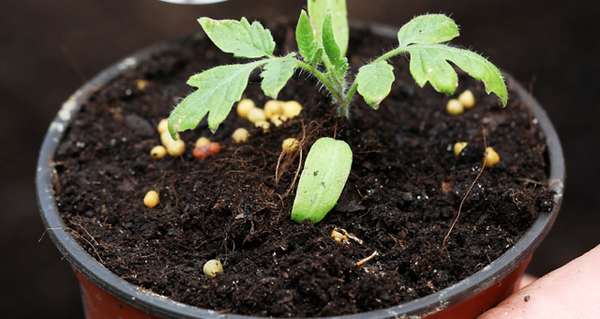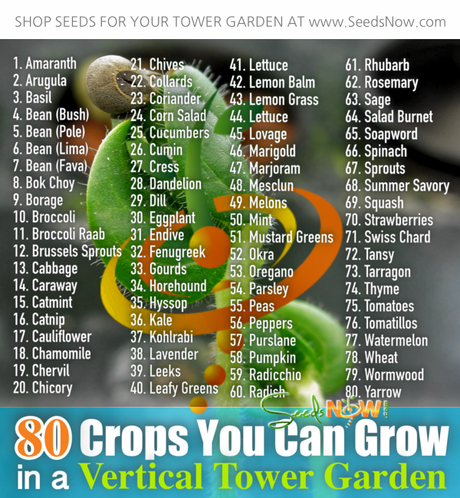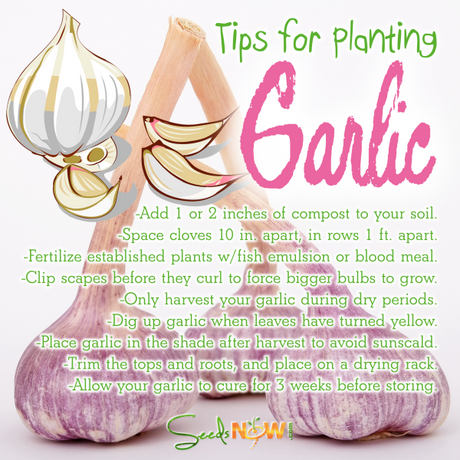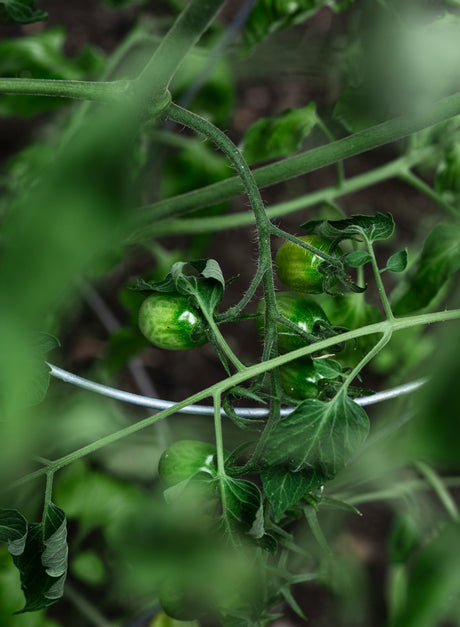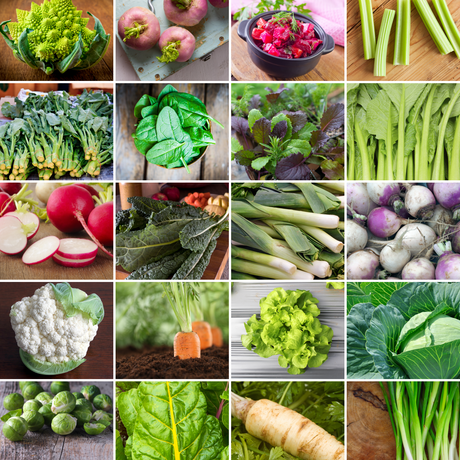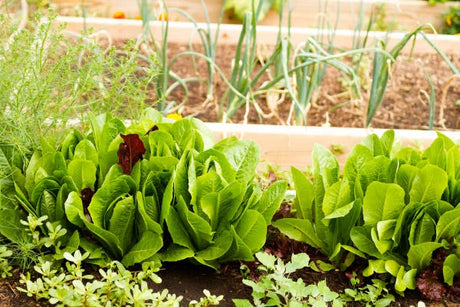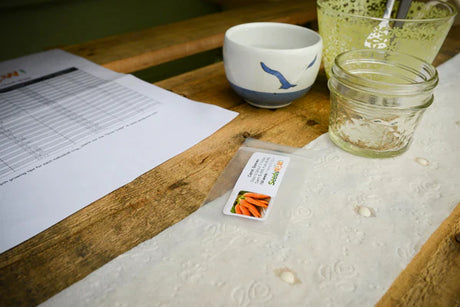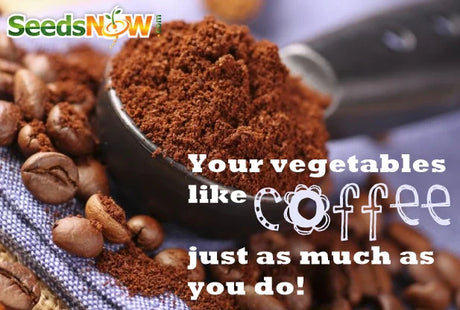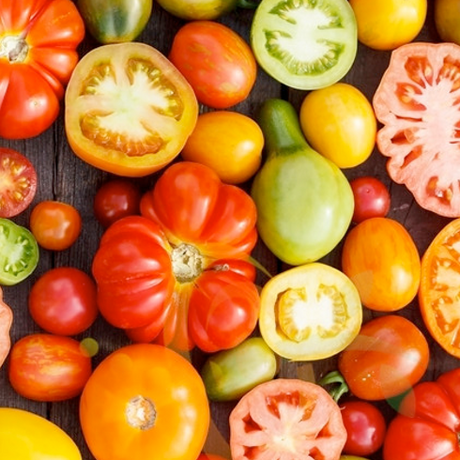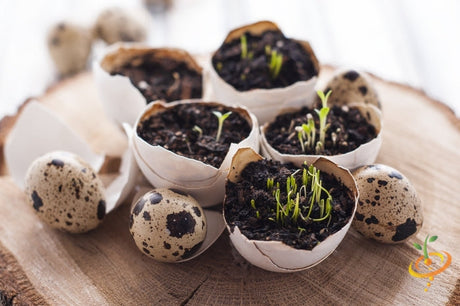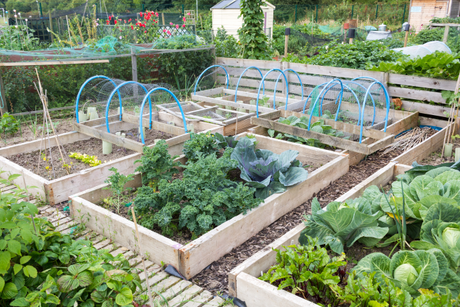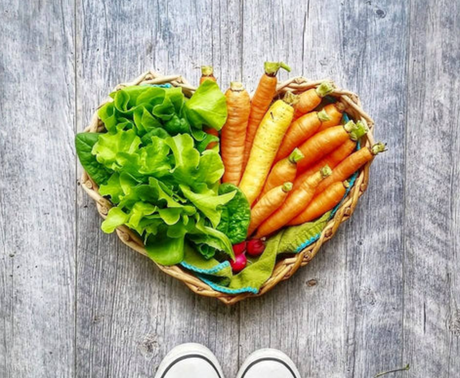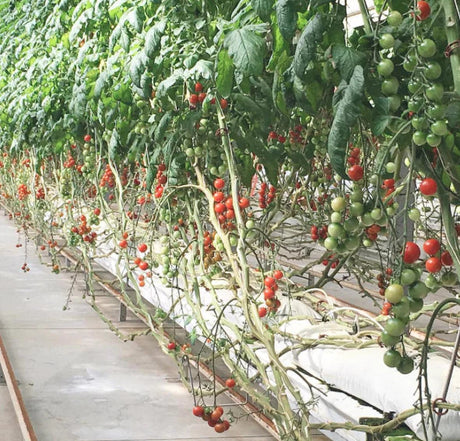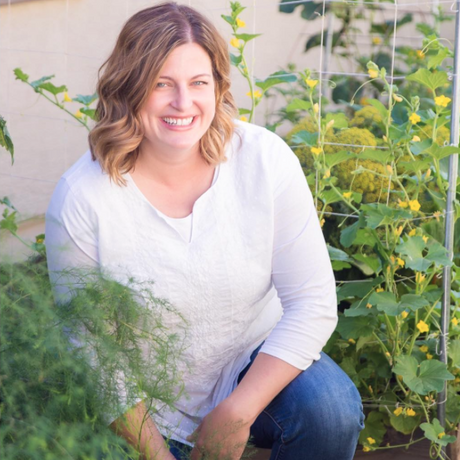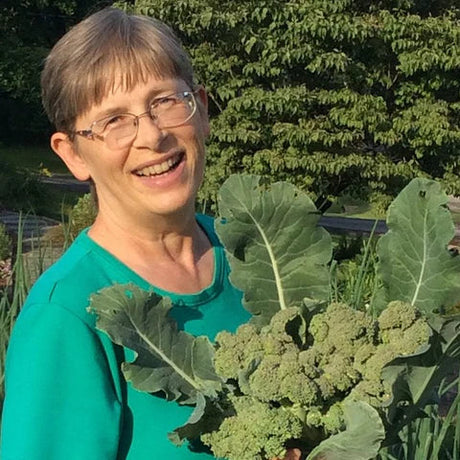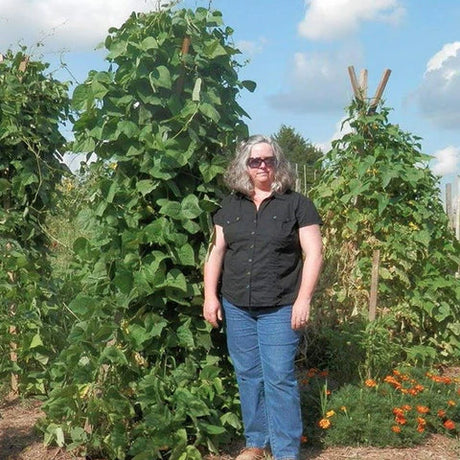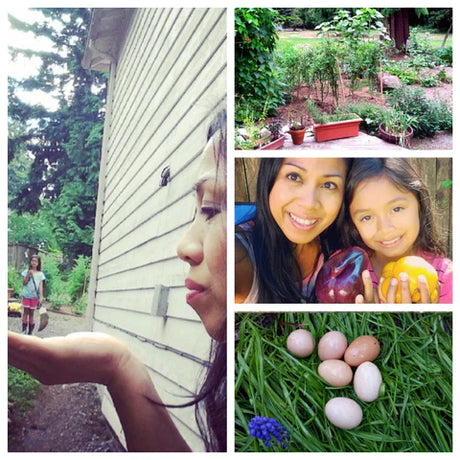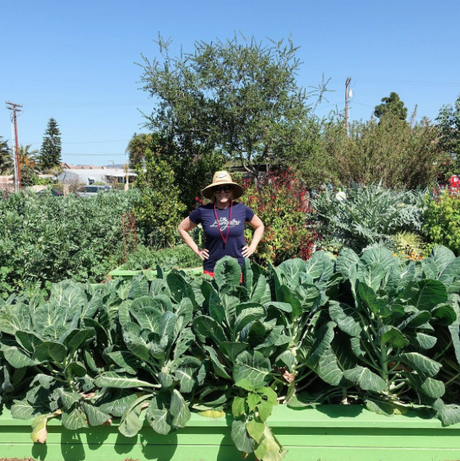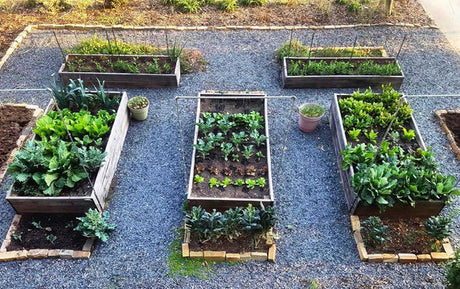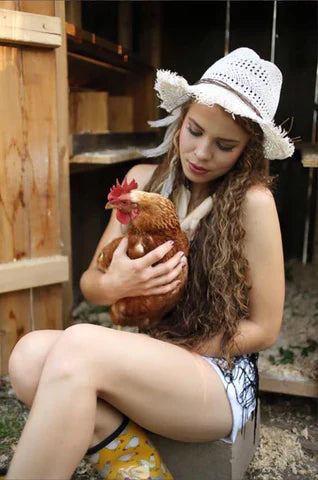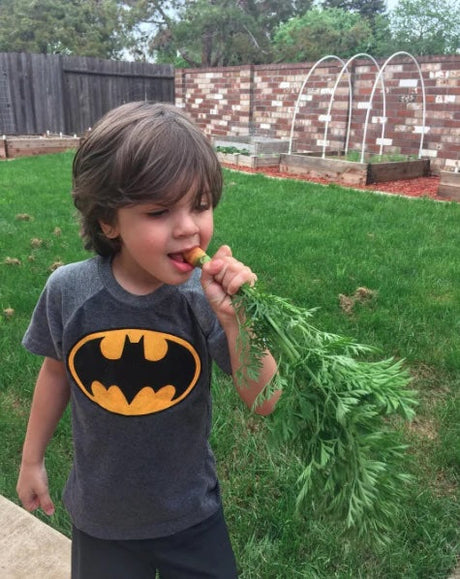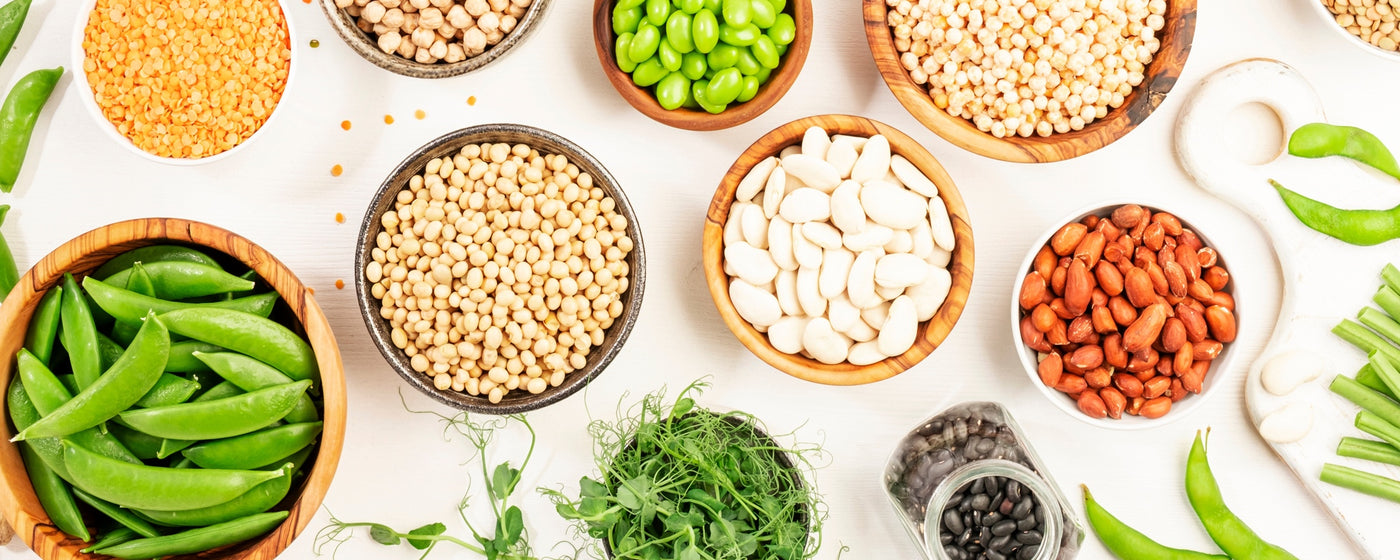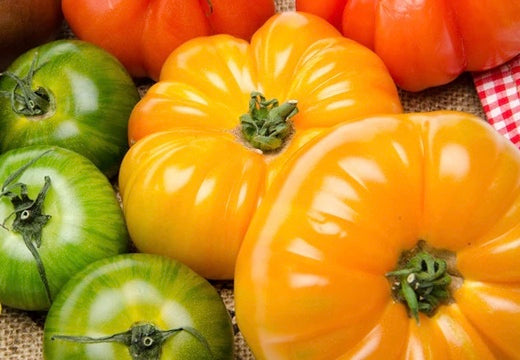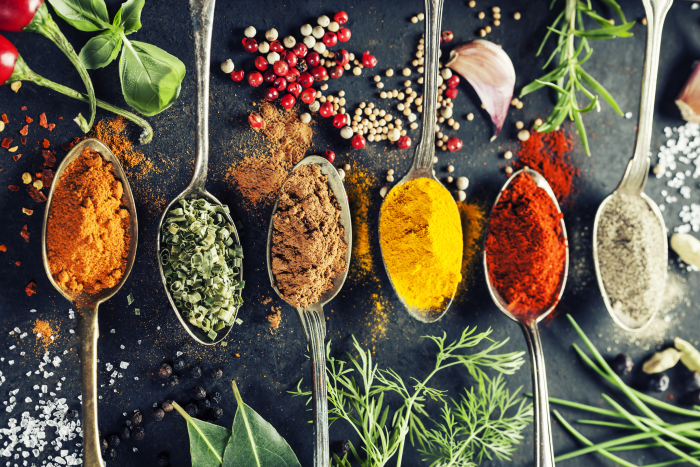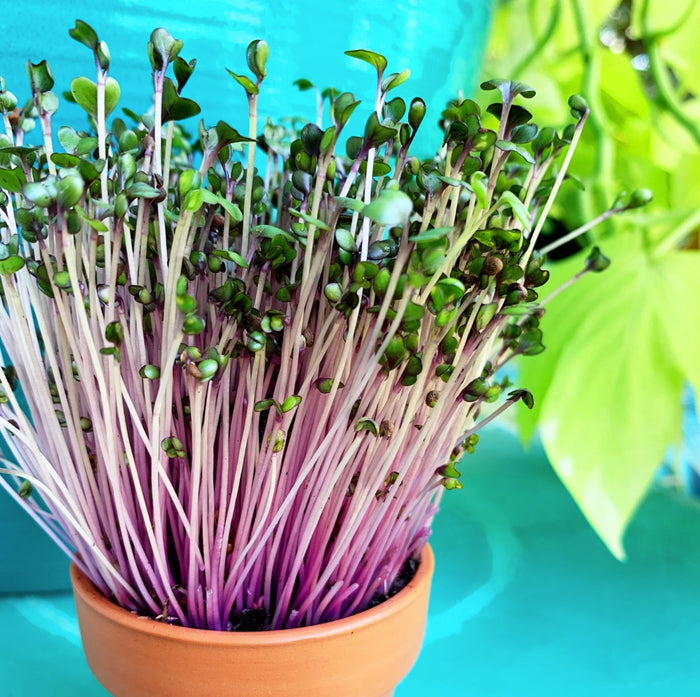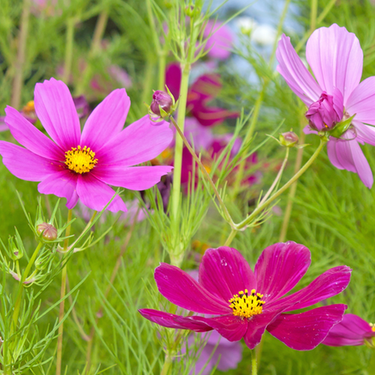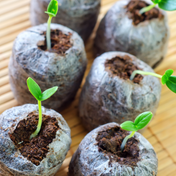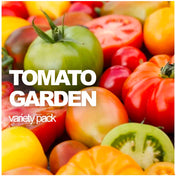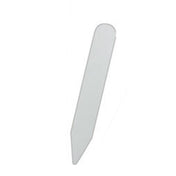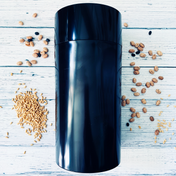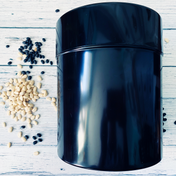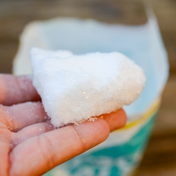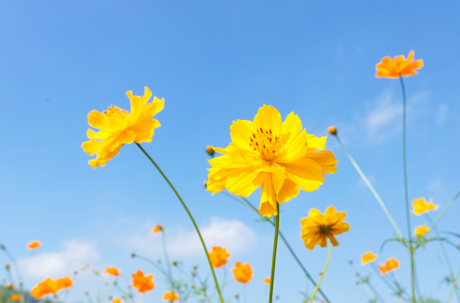| Determinate tomatoes ⟐ Indeterminate tomatoes | 📚 All Grow Guides |

SEED PLANTING INFO
- Botanical name: Solanum lycopersicum
- Depth to plant seeds: .25" deep
- Spacing between plants: 24"-36" apart
- Spacing between rows: 36"-48" apart
- Days to germinate (sprout): 7-14 days
- Germination soil temps: 70F-95F
- Soil needs: 6.0-6.5 pH
- Sun needs: Full sun
- Frost hardy: No
- Planting season: Spring, summer
Good companion plants: Basil, Borage, Eggplant, Onion, Parsley, Pepper,

Tomatoes are the most popular plants to have in a vegetable garden. The next most popular are Hot Peppers and Sweet Peppers
As with other crops, each tomato variety is either a variety bred in modern times (often a hybrid, the offspring of two very different varieties) or a traditional, open-pollinated variety (often called an “heirloom”). Within each of these two large groups, there are several importantly different types of tomatoes:
-
Slicers (large, fairly round tomatoes, often red, with a high water content, for use in sandwiches, etc.)
-
Roma, plum, or paste tomatoes (smaller, oval, with a lower water content, useful for drying or making tomato paste)
-
Small, bite-sized tomatoes of varied colors, shapes, and flavors, including yellow pear tomatoes and red cherry or grape tomatoes (good for eating whole, like grapes).

Every tomato variety is either Determinate or Indeterminate
-
Determinate tomato plants grow to a certain size (about 1.2-1.5 m, or 4-5 ft) and then stop growing. All of their fruit becomes ripe in a short time window, usually about 2 weeks, and then the plants begin to die, producing no additional fruit.
-
Indeterminate tomato plants, by contrast, grow from the time you plant them until they are killed by frost, and can reach heights of 2-3 m (6-10 ft) if they are supported. They produce and ripen new fruit steadily until frost.
- Most (but not all) traditional or “heirloom” varieties are indeterminate.
- Most (but not all) cherry tomatoes are indeterminate and can grow very, very tall. Before you plant a tomato, find out it if it is indeterminate or determinate! Many people are disappointed when their determinate tomato plants die in July or early August, even though it’s completely natural.

Information about tomato planting dates
Tomatoes have no frost tolerance and must be protected carefully if they are planted while there is still risk of frost. It’s safest to wait until all risk of frost has passed before planting tomatoes.
Many growers plant a first planting of determinate tomatoes as early as possible, then put in a second planting of indeterminate tomatoes 4 to 6 weeks later.
The determinate tomatoes will yield a large amount of fruit quickly (good for summer canning, freezing, and eating), after which they stop producing and can be removed to make space for other crops.
The indeterminate tomatoes start producing soon after and keep going until frost.
You will probably not want to plant tomatoes after July 1, as many tomatoes planted after this date won’t mature fully or produce much fruit before frost.
Preparing for planting
Tomatoes must be planted in full sun—they don’t like shade at all! Like most vegetables, tomatoes do best in relatively loose soil rich in organic matter. If you don’t have soil like this, you’ll want to work in some compost, composted manure, or another soil amendment a week or more before planting into the bed(s) where your tomatoes will be planted.
On the day of planting, you should have some tools (a trowel and a hose connected to water), and some organic fertilizer handy.
Plant spacing
It’s tempting to plant tomatoes too close together because they’re small when you transplant them. If you do this, your plants will compete with each other for light, water, and nutrients and/or grow into each other such that harvesting is difficult. Most tomato varieties should be planted at least 60 cm (2 ft) apart, and 90 cm (3 ft) is better. Cherry tomatoes should be planted 1.2 m (4 ft) apart.
How to plant
Tomatoes need a lot of fertilizer -- use about 125 ml (1/2 cup) of a standard organic fertilize for each plant. Note that tomatoes (like peppers and eggplant, but unlike most other plants) can be transplanted very deeply such that part of the stem of the plant ends up underground. The part of the stem that goes underground will produce roots and make for a stronger plant.

Care after planting
How to pollinate your tomato plants
Once your tomatoes are planted, they don’t need much care besides caging or staking and perhaps occasional watering. If you have used plastic mulch, you may not need to weed at all. If you haven’t, you will want to weed around them thoroughly until mid-June and then mulch with something else.
All tomatoes should be caged or staked and tied beginning shortly after transplanting. Cages are simplest and work well, but ONLY IF you buy or make cages that are tall enough and strong enough to hold up a mature tomato plant. The short, narrow wire style (about 60 cm or 2 ft tall, with three little pieces you stick into the ground) sold in many lawn and garden stores is completely useless for most common tomatoes.
Though you can buy good cages, the best cages are homemade wire cages made of concrete reinforcing wire or woven-wire stock fencing. If made properly, these can be used for many years (and you can store them in the garden over the winter). Find some heavy duty wire fencing at a hardware store with holes big enough to let you reach through for harvesting. Buy a roll about 8 m (25 ft) long and at least 1.2 m (4 ft) high (together with a good pair of wire cutters and a roll of thinner wire), cut it into pieces long enough to make cylinders 60 cm (2 ft) wide, and use thinner wire to bind each cylinder closed.
Put a cage around each small tomato plant and anchor it very firmly to the ground with stakes (which can be wood or metal). As the tomato grows, if its topmost growing tip or any of its largest branches are headed out of the cage, you can steer them back in. The plant may grow out of the top of the cage, but most of it will be contained.
Some growers stake tomatoes instead of caging them. Metal stakes are recommended (either steel “t-posts,” used for fencing and available at any hardware store, or concrete reinforcing rod, “rebar,” available at many hardware stores). Any stake used should be 1.8 m (6 ft) long or longer. After planting a tomato you should use a hammer or stone to pound a stake into the ground about 10 cm (4 in) away from the tomato such that at least 45 cm (18 in) of the stake is underground.
Every time the tomato grows about 15 cm (6 in), use strong twine or string to tie the main stem of the plant securely to the stake. If the plant has branched or is otherwise spreading out, gather it together gently and tie it up. You may fear that you are going to break the plant when you do this, but tomatoes are tough and will recover if they do break. If your stakes or cages are too short, too weak, or not anchored well into the ground, they will fall over. A mature tomato plant with fruit is extremely heavy!
If you are planting a lot of tomatoes (4 or more) in a straight row, you can do what’s called “basket weaving.” Instead of tying each tomato plant to its own stake, put a stake in after every second plant (meaning stake, plant, plant, stake, plant, plant, etc., ending with another stake). Then, use string or twine to weave a wall around the plants as they grow, tying it each stake as you pass.
If all of this sounds like too much trouble or expense, then just do whatever you can to keep your tomatoes off the ground (some gardeners build structures with dead branches and string, for example). This will prevent disease and improve yields. If your plants are otherwise healthy, you will probably still get some fruit if you do nothing at all to keep them off the ground.
Water requirements
Tomatoes are drought tolerant, but water them thoroughly once a week if it has not rained for more than two weeks (see watering). Do not water more often than this. Ove rwatering your tomatoes can cause them to produce a lot of extra vegetation without any extra fruit,
and it can make the fruit crack.
Harvesting
Vine-ripened tomatoes are wonderful to eat, but for many reasons it can actually make sense to pick tomatoes before they are fully ripe. Ripe tomatoes are very soft, for example, and are easily damaged during picking. Ripe tomatoes are also very attractive to pests like raccoons and ground squirrels, and it’s common to find that all of your ripe tomatoes on the vine have one or more bites taken out of them.
To prevent these and other problems, you may choose to harvest your tomatoes when they are beginning to get ripe (if it’s a red variety, this is when they’ve turned orange; you’ll have to experiment with varieties that are pink, yellow, purple, or other colors when ripe). Harvest a tomato by pulling gently on the tomato and twisting at the same time. Once you’ve removed the tomato, gently remove
the stem from the tomato if possible, since it will poke holes in other tomatoes if you put it in a bag or box.
If you are harvesting many tomatoes at once, be sure not to stack them more than two deep — even unripe tomatoes are easily bruised. Make sure to let your tomatoes start the ripening process on the vine — they have to get at least a little bit ripe before you pick them, or they may never ripen at all.
There are many recipes that call for green tomatoes, and you may want to try some of these out.
The other time to pick green tomatoes is when the first fall frost is approaching. This is a time when many growers pick all of their tomatoes and put them on trays indoors, hoping that some of them will
get ripe.
Post-harvest handling and storage
To begin with, NEVER PUT TOMATOES IN THE REFRIGERATOR! (except, perhaps, one you have partially eaten). Refrigeration keeps tomatoes from ripening, and while you might think that would be good, it quickly changes their flavor and can make them spoil. If you have harvested ripe tomatoes, leave them on a countertop, plate, or windowsill indoors, and eat or process them within a few days. You can buy inexpensive electric food dryers that allow you to convert thinly sliced tomatoes (and other foods) into a form that is tasty, compact, and stores for years without refrigeration. You can also make tomatoes into paste, sauce, salsa, and many other forms that can be eaten fresh or canned. See resources for more information for information on canning and drying.
If you have harvested not-quite-ripe tomatoes as discussed above, set them on a plate or tray or windowsill and wait for them to get ripe. Check them often, since they can go sometimes go from underripe to soft and rotting in just a few days. At the end of the season When your tomato plants die (either because they are determinate varieties that are genetically “programmed” to die midseason or because they have been killed by frost), they should be fairly easy to pull up. Put them in the compost pile. If you have used cages or stakes, clean the cages or stakes off and leave them stacked in the garden over the winter (if theft is not an issue) - the cold can help by killing disease-causing organisms. Pull up and throw away your plastic mulch if you have used it. Either plant a cold-tolerant crop like spinach in the bed(s) the tomatoes were in or get the bed(s) ready for winter (see the garden through the season).
Indeterminate tomatoes - A vining plant that grows and grows and grows, producing and ripening a steady supply of tomatoes all season long, until the end of its life. It would quickly outgrow a tomato cage, so give it a taller support, like a trellis, fence, or arch. Needs regular pruning.
RELATED LINKS: Pruning Your Tomato Plant: A Guide to Removing Suckers ⟐ 4 Ways to Ripen Green Tomatoes ⟐ Tips for Controlling Tomato Hornworms ⟐ Secret to Planting Tomatoes the Right Way ⟐ How to Make Pickled Tomatoes, In Just 5 Minutes ⟐ Learn how to get More Fruit on Every Plant ⟐ 14 Companion Plants to Grow With Your Tomatoes ⟐ Learn more about Indeterminate and Determinate ⟐ How to Plant, Grow, Harvest, and Save Organic Heirloom Tomato Seeds
GOOD COMPANION PLANTS: Basil, Borage, Onion, Parsley, Pepper
| Tomato Cultivation & History (source) |
|
Set tomato plants deeply, up to the first set of leaves; roots will form along the stem under ground and strengthen the support for the plant. A lanky seedling can be planted on its side, to the first leaves. It will right itself in a day or so. Use a starter solution (half-rate water-soluble fertilizer) when setting out tomatoes to give them a good, quick start. Listen for cold weather warnings; if late frost seems imminent, cover the plants at night with newspaper tents. How to Grow Some sources suggest that indeterminate and larger semi determinate varieties should be pruned of all suckers (tiny leaves and stems in the crotches of other stems) because they may steal nourishment from the fruits (see: Pruning Your Tomato Plant: A Suckers Guide to Removing Suckers). Feed with a starter solution when the first plants are set out and again after the first flowers form. Continue to supplement with a weak fish emulsion or compost tea every 2-3 weeks. If you do not enrich the soil (see: Guide to Amending Soil) before planting, feed the tomatoes once a month with about 1/3 cup of 5-10-5 fertilizer scattered in a 2 foot wide band around each plant. Tomato plants need at least an inch of water per week; so water them well, especially during dry spells. If the plants are well mulched (see: Guide to Mulching), weeds should not be a problem. Try using a plastic mulch in either a red or black color. The mulch will help prevent weeds and keep soil borne pests from splashing up on the plants, in addition to helping control moisture. A generously moist growing season followed by a severe drought period, will often initiate blossom-end rot, which appears first as a water-soaked mark that develops to a flat, dark leathery spot. It can be discouraged with mulching and consistent water levels. Unlike most crops, you may solarize the soil as you grow tomatoes because they're very heat tolerant. Solarizing helps control disease, particularly verticillium wilt. Wet the soil and cover with clear plastic for the entire season for best results. Hand pollinate in greenhouses (see: How to Hand Pollinate Your Tomatoes). To keep indeterminate plants from making too much leafy growth, prune them to a single main stem by breaking off side shoots as soon as they appear. You will notice these side "suckers" growing between the crotch formed between the main stem and the leaf stem. Cut them out while they are small (see: Pruning Your Tomato Plant: A Suckers Guide to Removing Suckers). The terminal shoot is pruned off when the plants reach the top of the 5-6 foot stake to stop their growth. These plants are also pruned of suckers, the side shoots that grow between the main stem and the leaf axils to moderate their vegetative growth. Most gardeners prefer to prune their tomato plants to one or two main stems (see: Spank Your Tomatoes! -Get More Fruit on Every Plant) How to Harvest Pick the fruit when it is red ripe, and check the plants every few days when the harvest starts coming. Store excess tomatoes in the refrigerator, but the flavor is best at room temperature. Tomato flavor starts to decline at temperatures below 55 degrees. When frost threatens, pick the remaining green tomatoes, wrap in newspaper, and keep in a moderately dark, warm place. They will ripen gradually well past the harvest season. Given warm weather and abundant rainfall, tomatoes ripen in 60-85 days from the time seedlings are set out. When the fruits begin to turn red, check the plants every day and pick those that are fully red and firm, but not hard. Overripe tomatoes will fall off the plant and rot quickly. To store an abundance of tomatoes at the end of the year, you can roast them, and store in a little olive oil in the refrigerator. A very light frost will usually kill a few leaves, but the plant itself will continue to grow and produce. However, anything more severe than a touch of frost is likely to kill the entire plant. If frost is coming you can protect each plant by draping it in plastic sheeting or old bed sheets, or you can pull the plant up by its roots and hang in the basement until the fruit ripens. Neither method is guaranteed to work, and in cool areas an early frost almost always means the end of harvesting tomatoes.
|

